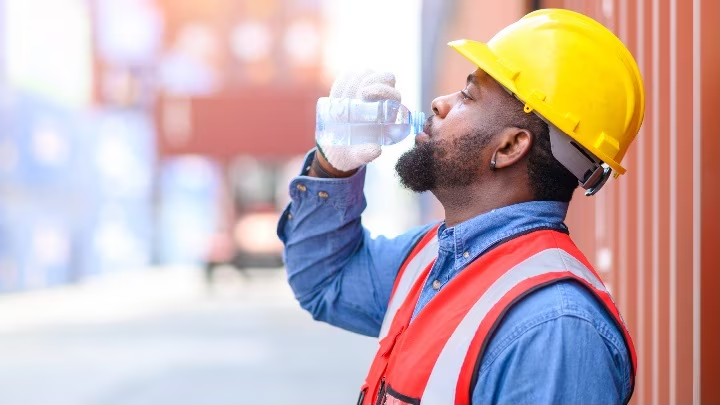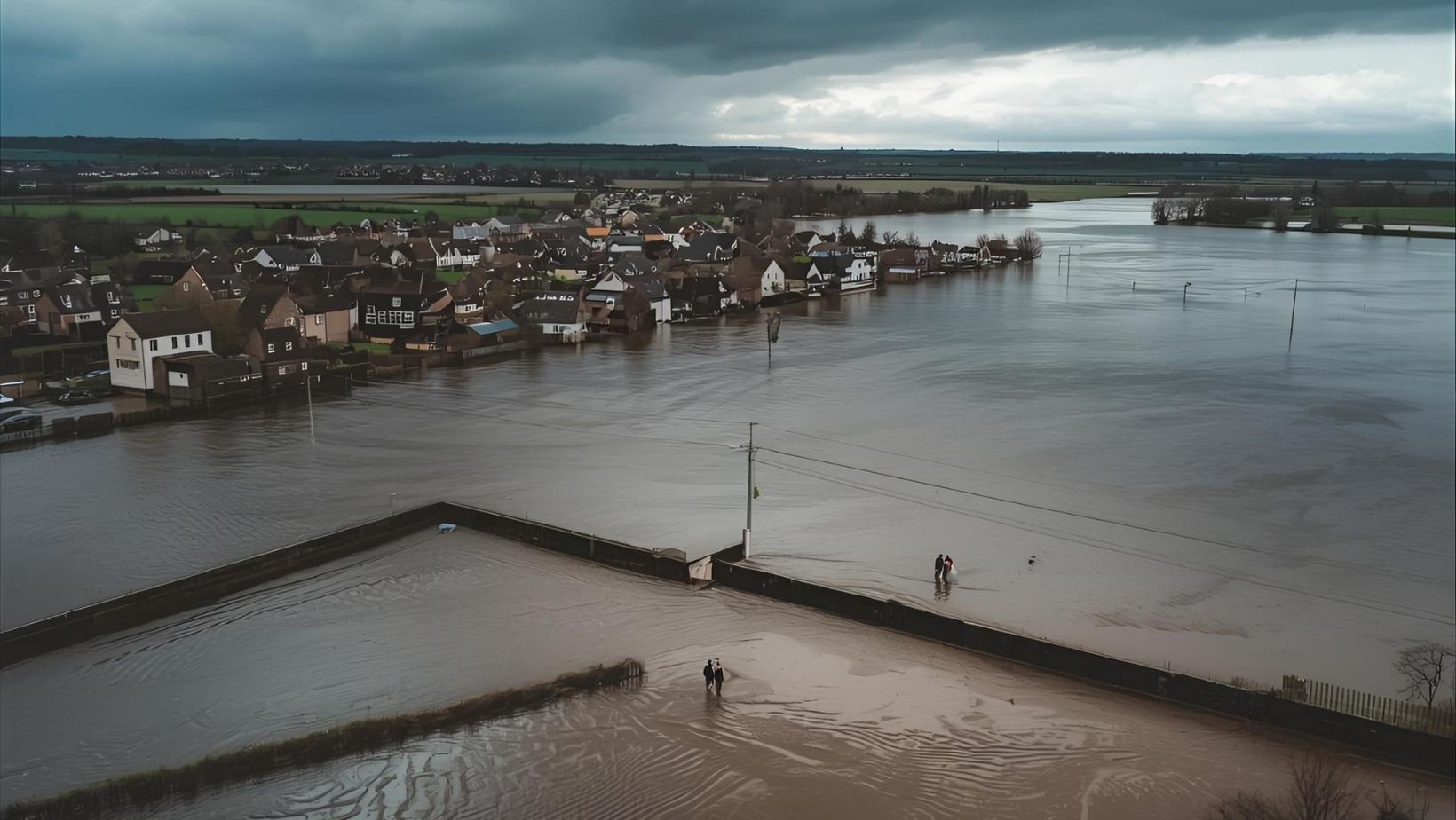Intro
For forward-thinking leaders, climate change is not just a distant concern. It’s reshaping the very backbone of their businesses supply chain and public policies. Heat stress affecting workers, flooding disrupting transportation networks, and wildfires threatening key production hubs are no longer rare events but recurring challenges. In response, executives and government officials are investing in climate-resilient practices that safeguard operations and protect their people, from diversifying suppliers and reinforcing infrastructure to adopting advanced forecasting technologies. By building supply chains that can withstand disruption while reducing environmental impact, companies are not only protecting their future but also proving that resilience, innovation, and growth can thrive together.
Here are 10 examples of where global companies and governments have implemented adaptive and resilient climate practices to support worker health and supply chain operations.
1. Nike (India): Human-Centric Heat-Resilience Drives Productivity
- Risk Driver: 40°C+ heatwaves caused worker fatigue and absenteeism.
- Adaptation Actions: Cooling canopies, “cool rooms”, rainwater harvesting, RO water, subsidised hydro-pouches, shade breaks.
- Investment: US$1.9 million over three supplier plants.
- Business Impact:
- Absenteeism –45%
- Labour productivity +14%
- Worker-turnover cost savings ≈ US$3.1 million/yr
- Broader Outcome: 25% cut in freshwater intensity; part of the Nike Water Minimum program.
Sources:
- Nike water stewardship and impact
- FY23 Nike Impact Report (PDF)
- Dehydrated? So is Nike (Harvard)
- YaleGlobal, factory conditions background
- Nike CR report FY04 (PDF)
2. Danone (South Africa): Water-Stress Turned Into Energy & Cost Savings
- Challenge: Droughts and blackouts disrupted 24/7 dairy operations.
- Solution: €13.7M micro-grid, zero-water-discharge/UF-RO reuse loop.
- ROI:
- 100% process water secured in 2023
- Water bills down 30%
- Avoided three production shutdowns (€112M value)
- CHP waste-heat recovery: €1M/yr electricity savings
- Social co-benefit: Groundwater abstraction cut by >200,000 m³/yr.
Sources:
- Danone South Africa Project (Planet Tracker PDF)
- FoodBev News on CHP/Microgrid
- PR Newswire: Hydrogen-ready CHP in Africa
3. Babcock Ranch (USA): Florida’s first hurricane-proof town
- Challenge: only 18% of Florida homes have flood insurance – some residents even report their insurance would be more than their rent.
- How Babcock was built:
- America’s first solar-powered town.
- 50% of Babcock Ranch’s footprint is set aside for green spaces, and they have intentionally developed the town to include stewardship, sustainability, preservation and restoration as key design features.
- Lakes double up as retaining ponds to protect houses from floods, streets are designed to absorb excess rainfall, and the community hall is reinforced as a storm shelter
- Result: Hit by Hurricane Ian in 2022, no house lost power and the town emerged basically unscathed.
Sources:
- BBC Future Planet Story
- How Water Makes This Town Flood-Proof | WSJ Pro Perfected
- Babcock Ranch Website
4. Unilever (Indonesia): Flood-Proof Palm-Oil Supply & Traceability
- Produce/Protect MoU: 32,000 ha NDPE smallholder plots, rainforest buffer.
- Physical Adaptation: Raised mill platforms, bioswale drainage, reduced flood downtime 70%.
- Digital Traceability: AI+satellite track 91% of farms, curbing illegal sourcing.
- Financial Gain:
- US$48M raw-material loss avoided (2024 flood season)
- Premium NDPE-certified oil lifted EBIT +3bp
Sources:
5. China: National Agro-Climate-Service Platform
- Intervention: 55,000 weather screens + SMS advisory, 21M farmers.
- Yield: 1Mt extra crop (+8%), 2.4% maize loss avoided.
- Impact: +US$326/farmer/year, +CNY18B rural GDP, reduced rural credit loss.
Sources:
5. West Africa: Climate-Smart Farming Seminars
- Mobile Trainings: 1,200 villages, 67,000 farmers.
- Yield/cost results: 35% yield boost, $45/ha in cost savings.
- Business impact: Cocoa processors report 18% fewer supply shortfalls.
- Insurance linkage: Allianz parametric index embedded, premium –22%.
Sources:
7. London Legacy Development Corp.: Olympic Park District-Energy & Flood Shield
- Feature: 20km heat-cool loop, 3.5MW biomass, low-temp design.
- Impact: 60% CO₂ cut, £3M/yr in energy savings (50 venues).
- Flood shield: Passive drainage, flood landforms.
- Property premium: Adjacent homes +12% vs local average.
Sources:
8. Marsh McLennan (USA): Community Catastrophe Insurance
- CBCI pilot: Jamaica Bay, NYC; parametric flood coverage for 3,000 homes.
- Stack: SAR flood maps + blockchain engine.
- Results: US$7.2M paid out (5 days); city saved $12M debris costs.
- Revenue: Marsh climate advisory 12% CAGR (2022–24).
Sources:
9. Blue Plains Wastewater Facility (Washington DC): 500-Year Floodwall & EIB
- Infrastructure: 17.2ft seawall + tunnel capture.
- Benefit: 1 billion gal overflow averted in 2024 storms.
- Finance: $25M Environmental Impact Bond, 180bp cheaper than average muni financing.
- Costs avoided: >$70M in fines and remediation.
Sources:
10. Global Real Estate & Utilities: Green Revenue Flywheel
- Finding: $1T adaptation-driven sales (2024, 200 REITs/utilities).
- Margin: +320bp avg. over non-resilient peers.
- Capital cost: Green bonds 42bp lower on average.
Sources:
11. US Manufacturing (Southeast): Flood-Mitigation Competitive Edge
- Actions: Raised substations, flood berms (post-Katrina).
- Effect: 85% less damage in Hurricane Helene 2024 than control group.
- ROI: $2.5M invested led to $15M downtime saved (6:1 ROI).
- Market share: Resumed shipments 4 days faster; $120M of extra orders.
Sources:


.svg)

.png)

.jpg)
